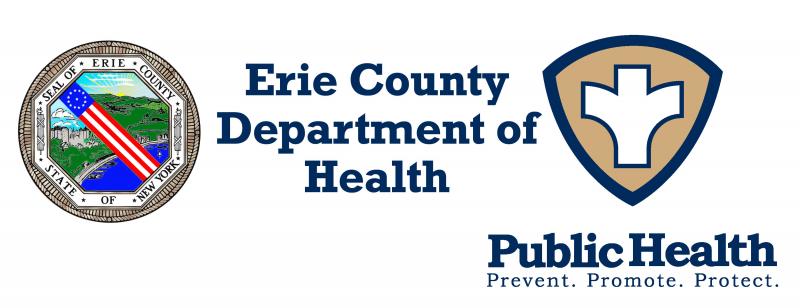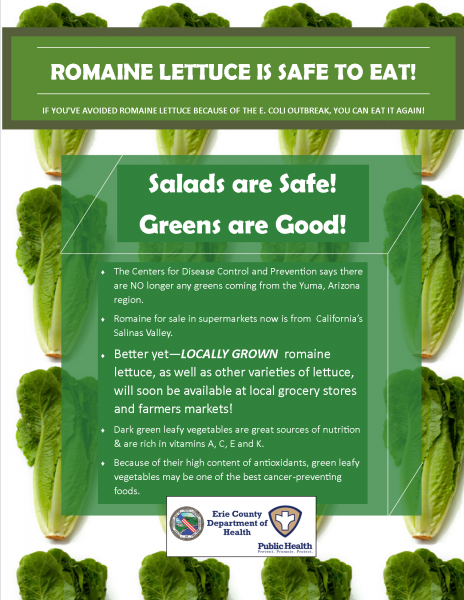Modified: June 18, 2018 3:39pm
Latest News

PRESS RELEASE
From the Office of the Commissioner of Health, Dr. Gale R. Burstein
Date: June 18, 2018
CONTACT: Mary C. St. Mary/Mary.StMary@Erie.Gov
Phone: 716.858.4941/ Mobile: 716.253.3925
Take Advantage of Locally Grown Fresh Produce
Support WNY Farmers & Strive to Eat Healthier
ERIE COUNTY, NY—Summer is the best time of the year to eat fresh vegetables and fruits, especially those grown close to home! Supermarkets that sell locally grown produce and Farmer’s Markets are great ways to access to Western New York’s wide variety of fruits and vegetables.
“Approximately 90% of Americans do not get the recommended daily amount of fruits and vegetables. Easy access to quality produce makes taking the recommended five daily servings of fruits and vegetables more achievable,” said Dr. Gale Burstein, Commissioner, Erie County Department of Health. “Food and nutrition play a crucial role in health promotion and chronic disease prevention and healthy eating is one of the most powerful tools we have to reduce the onset of disease.”
When shopping for fruits and vegetables, be sure to include a variety of lettuce on your grocery list, including romaine! According to the Food and Drug Administration (“FDA”), there is no need to avoid eating romaine lettuce. The last shipments of romaine from Yuma, Arizona, where the E.coli outbreak occurred this spring, were harvested on April 16th, and their harvest season is over. It is extremely unlikely that any romaine from the Yuma region is

still available in homes, grocery stores or restaurants due to its 21-day shelf life.
The four most common lettuces — green leaf, romaine, butter head and iceberg — are all sources of protein and dietary fiber, and good sources of vitamins, particularly vitamins A and K. Remember that the darker green the leaves, the more nutritious the salad green!
The fiber in fruits, vegetables, and legumes is important. Diets rich in fiber-containing foods may reduce the risk of heart disease. Fiber is also important for regularity. Since constipation may be a problem as you get older, it is important to consume foods rich in fiber.
Hints for Health Eating:
v Vary your vegetables. Eat more dark green vegetables, such as broccoli, kale, and other dark leafy greens; orange vegetables, such as carrots, sweet potatoes, pumpkin, and winter squash; and dry beans and peas, such as pinto beans, kidney beans, black beans, garbanzo beans, split peas, and lentils.
v Focus on fruit. Eat a variety of fruits—whether fresh, frozen, canned, or dried—rather than fruit juice for most of your fruit choices.
v If you eat a 2,000-calorie diet, you will need approximately 2 to 2 1/2 cups of fruit and 2 to 2 1/2 cups of vegetables each day and 1/2 cup of beans or peas most days (4 to 5 times a week).
“A lifetime of healthy eating helps to prevent chronic diseases, such as obesity, heart disease, high blood pressure, and type 2 diabetes”, Burstein concluded.
For more information:
Health.gov: Food and Nutrition
2015-2020 Dietary Guidelines for Americans
# # #

